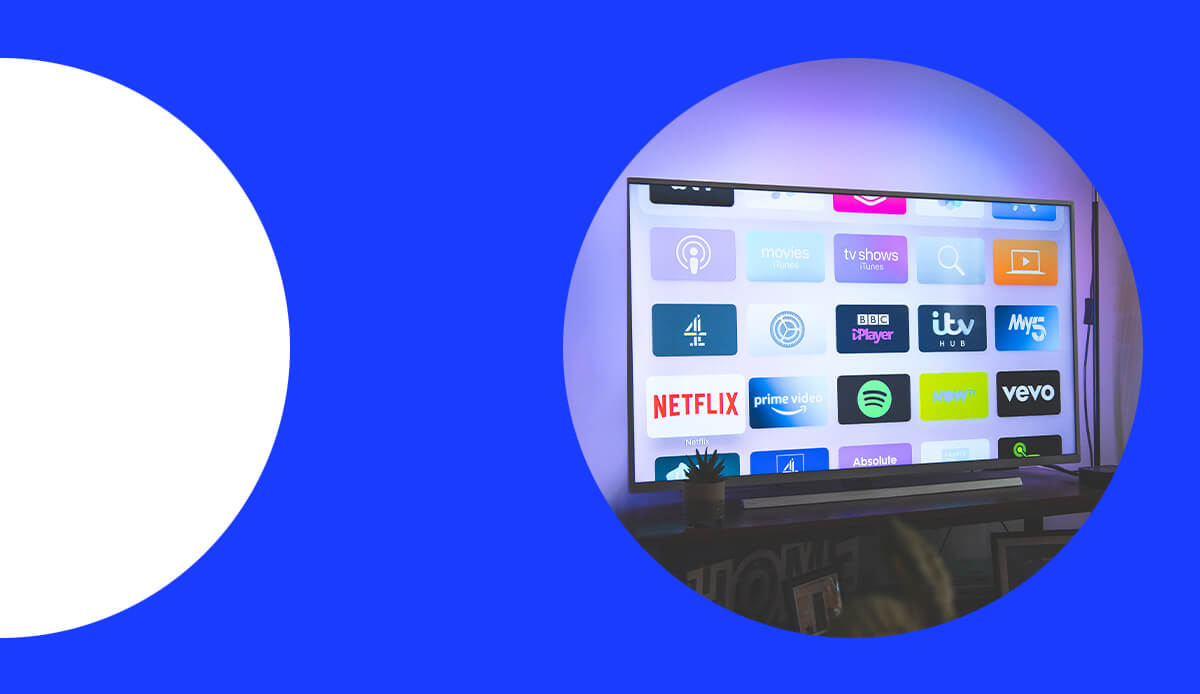
Guillaume Lelait, MD Americas recently joined the Singular Growth Masterminds podcast to discuss how streaming TV has changed performance marketing.
Guillaume Lelait joined M+C Saatchi Performance in 2020 to lead the US team. After identifying the opportunity streaming TV offers for advertisers a new division was formed at the agency to build streaming TV into the marketing mix for clients. To discuss streaming TV Guillaume joined renowned tech enthusiast John Koetsier on the Growth Masterminds podcast where they covered the ins and outs of streaming TV. Below are some of the highlights, but you can watch or listen to the full episode, and also read the write-up from Singular here.
The growth of streaming TV as a channel
Due to Covid, the streaming TV industry has boomed and last year it was estimated that 92% of US households were reachable via programmatic CTV, an 11% increase from 2021. In response, streaming services spent millions of dollars producing new content. Netflix, Disney+, Hulu, and others all developed their business models, both in terms of content production but also ad-supported subscription tiers. CTV ad spend overall increased by 18% of the total share of spend while linear TV has been in a steady decline.
“Even those that once said they would never have advertising now have released their media solutions and subsequent cost to consumers. Both Netflix and Hulu have changed the structure of tiers to ads v non-ads, giving choices to the consumers, but at a premium. And some are willing to pay for an ad-free experience, Disney+ revealed (source?) 30% of users said they would switch to a higher cost but ad-free tier rather than paying less but experience advertising.” said Lelait.
A sporting landgrab
Sports coverage and live sport are one of the last sectors of entertainment to move into streaming TV, with sports rights now rapidly moving to subscription services. “Until recently sport would have been one of the last reasons to have cable but now this is changing too,” said Lelait. In 2021 Amazon did a deal with the NFL (starting in 2022) for exclusive coverage of Thursday Night Football at a price tag of $67 million per game season. Then came Major League Soccer with an MLS Season Pass, enabling subscribers to access all MLS games through Apple TV, devices, smart TVs, etc for the next 10 years at a price of $2.5 billion.
A Fragmented Landscape
“Overall the streaming TV landscape is extremely fragmented, with Roku and Amazon Fire TV dominating the picture’ Said Lelait. At 41% share of big-screen viewing time in the US Roku is the number one streaming service followed by Amazon Fire TV at 18%. Following behind comes Samsung TV with a 10% share, LG TV at a 5% share, and Android TV with 3% share.
A recent report showed that U.S. households subscribe to more streaming services than ever before, with 60% having at least four services. However, overall satisfaction with streaming services is declining, especially in the areas of content quality and subscription cost and the average monthly spend on subscriptions remained the same at $54 per month in July 2022 vs $55 in June 2021. Netflix remained the largest and most popular brand, with 39% of respondents choosing Netflix over Amazon Prime at 1.
“Navigating the complexity of streaming TV can be a challenge for many advertisers, even choosing the right measurement solution can be a complex decision. We guide our clients through everything from strategy, planning, buying, execution, and measurement and are seeing incredible success in the streaming TV space,” said Lelait.
What will happen next?
The bulk of ad spend is still within linear TV at the moment but this is in decline as streaming TV continues to grow.
- Shoppable streaming solutions will develop further eg YouTube ‘send to phone’ which sends a link for a website or product directly to mobile to enable shopping while not interrupting the viewing experience on the big screen. YouTube by its very nature is well positioned to influence customer behavior, with users logged in and first-party data influencing search results.
- A partnership between Roku and Walmart could enable shoppers to click on a Walmart ad within Roku rather than leave the streaming platform to go to Walmart.com to finish shopping.
- The battle for measurement will continue, leading MMPs are increasingly adding streaming TV measurement to their products, and discussions around standardizing audience numbers on streaming TV continue.
To find out more about how to ensure streaming TV works for your brand download our report; The Definitive Guide to Programmatic Streaming TV for Performance Marketers

